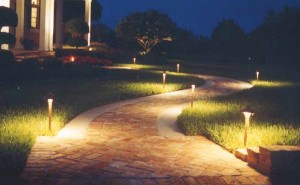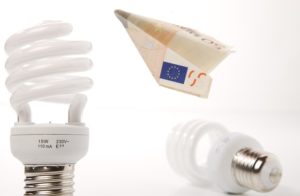 When it comes to buying energy efficient LED lighting for your Scottsdale home, you have a multitude of choices and factors to consider. For starters, you need to consider the color temperature of the LEDs you buy, which now come in the standard warm orange produced by incandescent bulbs, the greenish-white hue of fluorescent lights and tubes, plus a multitude of colors including red, blue, purple, green, and yellow.
When it comes to buying energy efficient LED lighting for your Scottsdale home, you have a multitude of choices and factors to consider. For starters, you need to consider the color temperature of the LEDs you buy, which now come in the standard warm orange produced by incandescent bulbs, the greenish-white hue of fluorescent lights and tubes, plus a multitude of colors including red, blue, purple, green, and yellow.
LED bulbs with different color temperatures will create different lighting results, so it helps to know what kind of effect you want to produce in your home.
1. Cool White or Warm White?
The most common LED temperature variants found in stores are cool white and warm white. In case you’re wondering, neither is superior over the other; your choice ultimately boils down to preference and intended use in your home. It also helps to match your LEDs with your home’s existing wall and ceiling colors, décor, and furniture. White walls tend to look more pleasant under warm light, while cool white light allows colored walls to ‘pop’ out more.
2. Warmth and Traditional vs. Clean and Modern
If you’re fond of the warm yellow glow of traditional incandescent light bulbs, a warm white LED (around 2700K to 3000K) will be right around your corner.
If you want to create a clean and contemporary look in your home’s living spaces, you may prefer the bright and clean feel of the light generated by a cool white LED (around 4000K to 5000K). Cool white LEDs generate more blue light and have a higher lumen output compared to warm white LEDs, which also explains why they appear brighter to the eye.
For the most part, people from warmer and sunnier countries and regions seem to gravitate to towards cool white LEDs, while people from countries with cooler climates prefer warmer light.
3. Color Temperature for Commercial Lighting
When choosing LEDs for commercial applications, choosing the right color temperature is even more important, affecting the kind of mood and effect you want to evoke when illuminating products or commercial spaces (think galleries and showrooms).
For example, food looks better and more appetizing when lit by a warm light. While products like electronics look more appealing under cool white light—just observe the light used by Apple in promotional videos for their products.
4. Applications for Different Lighting Color Temperatures
When using different colors for the most common living spaces in your Scottsdale home, you can refer to the guide below:
- Cool White – Home office, kitchen, bathroom, and study
- Warm White – Bedrooms, hallways, den, and living room
- Daylight – Retail spaces, commercial spaces, art galleries
5. Don’t Be Afraid to Mix and Match
While it’s certainly important to choose the right LED color for the desired lighting effect you want to create, there’s no reason you can’t mix and match different colors in one space. For example, you can use warm white LEDs for your living room’s general lighting, and use cool white LEDs for task lights—think reading lights and spotlights.
If you’re having problems picking the right LED colors for your Scottsdale home, it’s worth getting a consultation from a lighting designer for professional advice on the matter. Good luck!


 Apartment Lighting
Apartment Lighting Area Lighting
Area Lighting Automotive Lighting
Automotive Lighting Building Wall Pack Lighting
Building Wall Pack Lighting Canopy Lighting
Canopy Lighting High & Low Bay Lighting
High & Low Bay Lighting Industrial Lighting
Industrial Lighting Parking Lots & Garages
Parking Lots & Garages Pathway Lighting
Pathway Lighting Retail Lighting
Retail Lighting Stairwell Lighting
Stairwell Lighting























